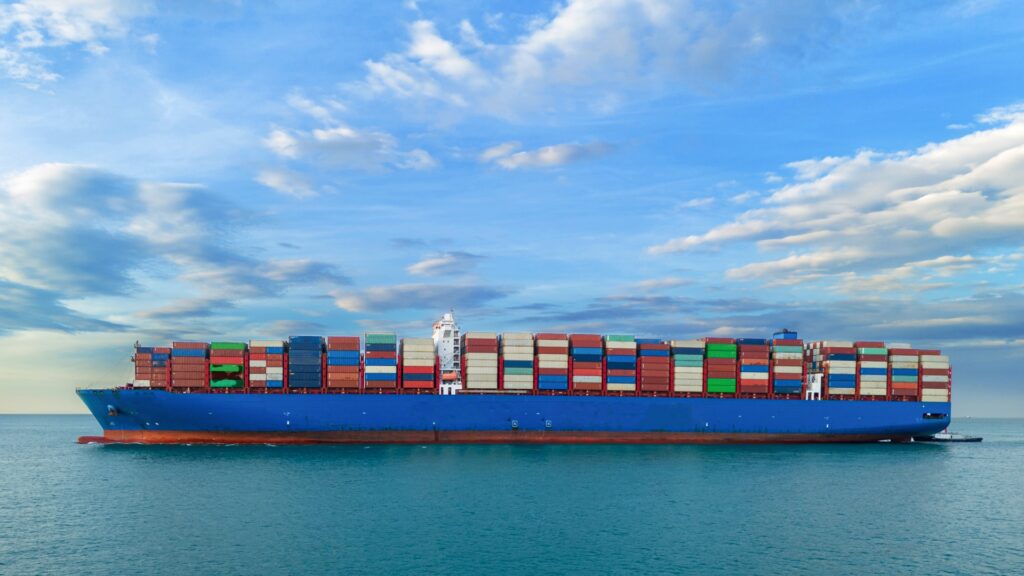In this article, guest contributor Tolga Koc, Director at Anadolubank Nederland N.V. and member of the ICC Banking Commission, compares transferable and back-to-back letters of credit (LCs), with a focus on risk mitigation strategies banks can use.
The views and opinions expressed in this article are those of the author for education purposes and do not necessarily reflect the official policy or position of ICC Academy, or ICC.
What is a transferable letter of credit (LC)?
A transferable letter of credit (LC) is a trade finance instrument and type of LC that allows the beneficiary (the party receiving the payment) to transfer part or all the credit to another party. This is particularly useful in trade finance, where intermediaries such as trading companies or brokers are involved.
When are transferable LCs used?
Transferable LCs are often used in international trade transactions involving intermediaries.
Common scenarios include:
- The beneficiary is not the actual supplier of the goods but an intermediary.
- The intermediary lacks sufficient funds to pay the supplier upfront and relies on the buyer’s credit.
- The supplier requires a secure payment method due to trust concerns.
- The transaction involves multiple parties, requiring secure payment mechanisms at each stage.
Transferable LCs can be used in both domestic and international commerce. They are particularly useful in international trade, where intermediaries facilitate transactions between buyers and suppliers across different markets.
Who are the parties involved in a transferable LC?
| Parties | Role |
|---|---|
| Applicant | The buyer who requests the LC from their bank. (They are not a party of the LC itself, but the ordering party of the LC and payer/buyer of the goods) |
| Issuing bank | The bank that issues the LC on behalf of the applicant. |
| (First) beneficiary | The party in whose favour the LC is issued, often an intermediary. |
| Second beneficiary | The party to whom the beneficiary transfers the LC, usually the actual supplier of the goods. |
| Advising bank | The bank that advises LC to the first beneficiary and nominated to transfer the LC partially or full to the 2nd beneficiary, through the services of a second advising bank, or directly (in case of a relation between the advising bank and second beneficiary). |
| Confirming bank | Sometimes the beneficiary asks for extra protection in terms of payment commitment, in addition to that of the issuing bank. In most cases the confirming bank is the same as the advising bank, but does not have to be. Confirmation would cover both the first beneficiary and (if transferred) the second beneficiary. |
Key considerations before issuing a transferable LC
- The creditworthiness of the applicant (buyer)
- The nature of the goods and associated risks
- Trade terms and conditions that align with all parties
- Compliance with international trade laws and regulatory requirements
Risks involved in using transferable LCs
Operational risks
Errors in the LC transfer process can lead to delays or payment rejection. Common risks include:
- Documentation errors: Minor inaccuracies such as incorrect shipment details, quantities, or descriptions can cause discrepancies, leading to delays.
- Processing delays: Slow document handling by banks may disrupt payment timelines.
Fraud risks
Fraud in transferable LCs can occur in various ways:
- Falsified documents: Fake invoices, certificates, or bills of lading misrepresent goods.
- Over/under-invoicing: Manipulating invoice values to evade taxes or customs duties.
- Phantom shipments: Presenting shipping documents for goods that were never delivered.
- Document discrepancies: Altering documents to mislead involved parties.
- Double financing: Using the same documents to secure financing from multiple banks.

Global Trade Certificate (GTC)
What is a back-to-back letter of credit (LC)?
When a transferable LC does not meet certain requirements due to its inherent limitations, a back-to-back LC can often provide a more flexible and secure alternative. This arrangement benefits the intermediary (middleman), the supplier, and the buyer by offering additional security for each party involved.
In what types of transactions are back-to-back LCs used?
Back-to-back LCs are particularly useful in scenarios where:
- An intermediary (trader or broker) is involved – The intermediary typically does not have sufficient funds or credit to purchase goods outright from the supplier.
- Separate LCs are needed for each stage of the transaction – One LC pays the supplier, another LC ensures the intermediary gets paid by the buyer.
- International trade involving multiple parties – Frequently used in cross-border transactions in which a buyer in one country and a supplier in another rely on an intermediary to facilitate the deal.
Typically, the intermediary in a back-to back LC arrangement is a trader, broker, or middleman. This person or entity coordinates the purchase and resale of goods, ensuring each party meets its obligations.
How many LCs are issued in a back-to-back LC and what role does each play?
| Type of LC | Issued by | Issued in favour of | Key role |
|---|---|---|---|
| Master (Primary) LC | Buyer’s bank | Intermediary (first beneficiary) | Guarantees that the buyer will pay the intermediary upon presentation of the required documents. |
| Secondary LC | Intermediary’s bank (using the Master LC as security) | Supplier (second beneficiary) | Guarantees that the intermediary will pay the supplier once the goods are delivered and the necessary documents are provided. Protects the supplier’s interests. |
By using a back-to-back LC, the intermediary avoids the need to advance their own funds. Both supplier and buyer benefit from the security provided by each LC, making this arrangement especially useful in complex or international transactions where multiple parties are involved.
What do the two LCs in a back-to-back transaction usually include?
| LC | Typical contents |
|---|---|
| Master (Export) LC | Amount (total value of goods) Shipment terms (Incoterms®) Description of goods Required documents (e.g. commercial invoice, bill of lading) Payment terms (e.g. sight payment, deferred payment) |
| Secondary (Import LC) | Amount (mirroring or reflecting the Master LC, adjusted for intermediary’s costs/profit if necessary) Shipment terms (often similar to the Master LC) Description of goods (matching or adapted from Master LC) Required documents (tailored to supplier needs but aligned with Master LC requirements) Payment terms (e.g. designed to ensure timely payment upon presentation of conforming documents) |
Why might a back-to-back LC be preferred over a transferable LC?
| Advantage | Description |
|---|---|
| Flexibility | Back-to-back LCs allow for modifications in the terms between the Master LC and the Secondary LC, accommodating different requirements of the buyer and the supplier. |
| Security | Both the intermediary and the supplier have distinct LCs ensuring payment, adding an extra layer of security compared to a transferable LC. |
| Complex transactions | For transactions involving multiple stages or parties, back-to-back LCs provide clearer separation and control over each transaction phase. |
| Risk management | Back-to-back LCs help mitigate risks associated with large, complex transactions by providing separate assurances to each party involved, ensuring obligations are met at each stage of the process. |
Read about the different types of documentary credit: ‘Types of documentary credit | A comprehensive guide’
What should banks consider before issuing a back-to-back LC?
| Consideration | Description |
|---|---|
| Creditworthiness | The bank must assess the financial stability of both the intermediary and the buyer to ensure they can fulfil their payment obligations. |
| Transaction nature | Understanding the specifics of the goods or services being traded – and any related risks – helps the bank gauge potential issues and liabilities. |
| Compliance | The bank must ensure compliance with all relevant regulatory requirements, including international trade laws and banking regulations. |
| Document verification | Establishing rigorous verification procedures for all required documents is crucial to prevent fraud and maintain transactional integrity. |
| Reputation | Evaluating the track record of the intermediary, supplier, and other parties involved helps the bank avoid engaging with potentially fraudulent participants. |
Risks involved in using back-to-back LCs
Operational risks
- Complex documentation and drafting: Because two separate LCs are involved (import and export), banks must carefully draft each LC and conduct thorough document checks twice.
- Increased potential for fraud: The added complexity and multiple verification points heighten opportunities for fraudulent activity, a risk inherent to most LC transactions.
Financial risks
Back-to-back LCs can expose parties to various financial uncertainties:
- Market fluctuations
- Changes in commodity prices or exchange rates may increase overall transaction costs.
- A depreciating currency can make it more expensive for the intermediary or buyer to fulfil payment obligations.
- Interest rate changes: Rising interest rates can increase financing costs for the intermediary, making the LC arrangement more expensive to maintain.
- Inflation: Prolonged transactions may be affected by inflation, potentially driving up the cost of goods or services before payment is finalised.
- Exchange rate risk: In international deals, currency fluctuation between the buyer’s and supplier’s currencies can significantly impact the transaction’s profitability.
- Credit risk: If the buyer becomes insolvent or experiences financial distress, they might default on payments. This can disrupt the intermediary’s ability to pay the supplier under the Secondary LC.
Compliance risk
- Regulatory adherence: Failing to comply with export-import controls, customs regulations, or sanctions can lead to fines, penalties, or even criminal liability for the intermediary and/or the banks involved.
- Policy changes: Sudden shifts in international trade policies or sanctions regimes may delay or invalidate an LC, causing significant financial and legal complications.
In a back-to-back LC arrangement, each party’s strict compliance with regulatory and documentation requirements is critical. Noncompliance can halt the transaction, result in hefty penalties, and undermine the security benefits that back-to-back LCs are meant to provide.
Read about sanctions and geopolitics in trade finance:‘Geopolitics, sanctions, and trade finance: Challenges for UCP 600 and documentary credits’
How can banks mitigate risks in using LCs?
| Risk mitigation strategy | Description | Benefit |
|---|---|---|
| Know Your Customer (KYC) | Perform comprehensive background checks on all parties, verifying their identity and ensuring they are not on sanction lists | Reduces risk of fraud and money laundering by confirming the credibility of involved parties. |
| Credit checks | Regularly monitor the financial health of buyers, intermediaries, and suppliers to identify potential insolvency or payment issues. | Allows early detection of risk factors, enabling additional safeguards to collateral requirements. |
| Document verification under UCP 600 | Scrutinise each document (e.g. invoices, bills of lading) to ensure full compliance with LC terms and international standards (UCP 600). | Minimises discrepancies, reduces fraud, and ensures contractual obligations are met. |
| Digital tools | Leverage electronic platforms, e-signatures, and automated systems to streamline LC processing and verification. | Cuts down on human errors, increases processing efficiency, and provides secure digital audit trails. |
| LC confirmation | Request confirmation from a reputable bank or act as the nominated bank, guaranteeing payment in case of buyer or country risk. | Enhances payment security for the beneficiary, especially in high-risk or politically unstable areas. |
| Trade credit insurance | Obtain insurance to protect against non-payment or buyer default. | Helps recover losses if a buyer fails to pay, reducing potential financial exposure. |
| Compliance with international standards | Adhere to global recognised rules like UCP 600 and eUCP, ensuring alignment with local and international regulations. | Mitigates legal risks and fosters smoother cross-border transactions. |
| Jurisdictional expertise | Develop or consult specialised knowledge of the legal and regulatory frameworks in countries where the LC is issued or utilised. | Prevents legal complications arising from differing local laws and requirements. |
| Electronic documentation | Utilise eUCP and other electronic methods to manage and exchange documents digitally | Speeds up document handling, reduces cost, and lowers risk of document loss. |
| Staff training | Provide ongoing training and updates on regulations, practices, and technologies related to trade finance. | Ensures personnel remain competent and current, minimising errors and compliance failures. |
Read: ‘25 tips to avoid common documentary credit issues’

Global Trade Certificate (GTC)
Comparing transferable and back-to-back LCs
| Feature | Back-to-back LCs | Transferable LCs |
|---|---|---|
| Definition | Two separate LCs are issued (Master LC and Secondary LC). | One LC is issued that can be partially or fully transferred. |
| Use case | Used when an intermediary needs separate LCs for the buyer and the supplier. | Used when a trader (intermediary) needs to transfer the LC to a supplier. |
| Parties involved | Buyer, intermediary, supplier, and 2 (or 3) banks. | Buyer, intermediary, supplier, and 2 (or 3) banks. |
| Collateral requirement | Master LC acts as collateral for the Secondary LC. | No collateral required, but terms must be transferable. |
| Cost | Generally higher, due to complexity and the need for two LCs. | Typically, lower since only one LC is required |
| Flexibility | High; allows modifications between the Master LC and the Secondary LC | Limited; must adhere to the original LC terms |
| Operational complexity | High; requires meticulous drafting and multiple document checks. | Moderate; simpler structure but still requires careful management. |
| Risk management | Offers better risk management with distinct LCs for each party and stage. | More limited risk management, relying on a single LC’s terms and integrity. |
While transferable LCs offer a simpler structure and lower costs (making them suitable for straightforward intermediary transactions), back-to-back LCs provide greater flexibility and security by issuing separate LCs for the intermediary and supplier. Each arrangement carries its own set of risks, but with a pragmatic approach and robust documentation practices, banks and traders can mitigate these risks effectively.




